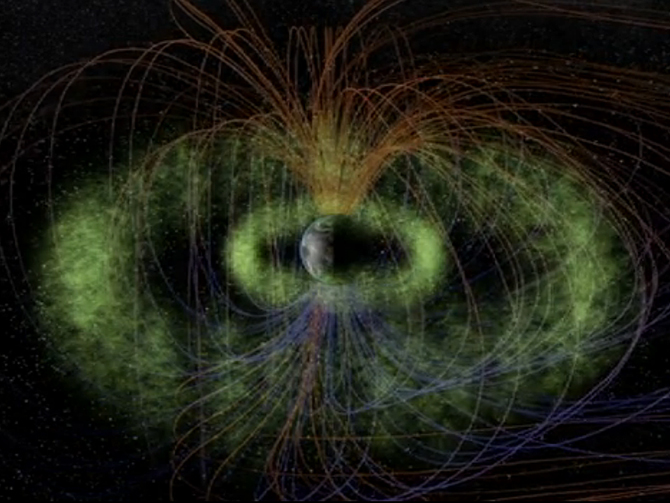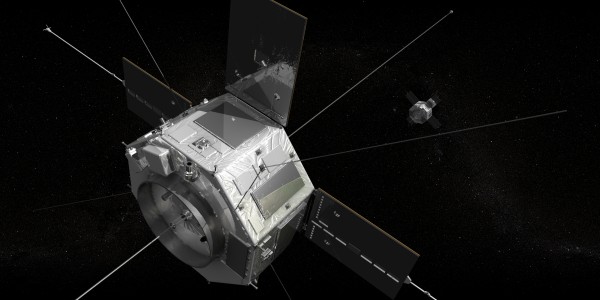NASA to hold news conference on upcoming Radiation Belt Storm Probes launch

NASA will hold a news conference at 18:00 UTC, Thursday, Aug. 9 to discuss the upcoming launch of the Radiation Belt Storm Probes (RBSP), a mission to study Earth’s radiation belts. The event will be broadcast live on NASA Television and streamed on the agency’s website.
The two-year RBSP mission will help scientists develop an understanding of Earth’s Van Allen radiation belts and related regions that pose hazards to human and robotic explorers.
RBSP will explore space weather — changes in Earth’s space environment caused by the sun — that can disable satellites, create power grid failures and disrupt GPS service. The mission also will allow researchers to understand fundamental radiation and particle acceleration processes throughout the universe.
RBSP is scheduled to launch no earlier than 4:08 a.m. Thursday, Aug. 23 from Cape Canaveral Air Force Station in Florida. The twin probes will lift off on a United Launch Alliance Atlas V rocket.

MISSION STATEMENT
The Radiation Belt Storm Probes (RBSP) is being designed to help us understand the Sun’s influence on Earth and Near-Earth space by studying the Earth’s radiation belts on various scales of space and time.
The instruments on NASA’s Living With a Star Program’s (LWS) Radiation Belt Storm Probes (RBSP) mission will provide the measurements needed to characterize and quantify the plasma processes that produce very energetic ions and relativistic electrons. The RBSP mission is part of the broader LWS program whose missions were conceived to explore fundamental processes that operate throughout the solar system and in particular those that generate hazardous space weather effects in the vicinity of Earth and phenomena that could impact solar system exploration. RBSP instruments will measure the properties of charged particles that comprise the Earth’s radiation belts, the plasma waves that interact with them, the large-scale electric fields that transport them, and the particle-guiding magnetic field.
The two RBSP spacecraft will have nearly identical eccentric orbits. The orbits cover the entire radiation belt region and the two spacecraft lap each other several times over the course of the mission. The RBSP in situ measurements discriminate between spatial and temporal effects, and compare the effects of various proposed mechanisms for charged particle acceleration and loss.
News conference panelists are:
— Madhulika Guhathakurta, Living With a Star program scientist, NASA Headquarters, Washington
— Mona Kessel, RBSP program scientist, NASA Headquarters
— Barry Mauk, RBSP project scientist, Johns Hopkins University Applied Physics Laboratory (APL), Laurel, Md.
— Rick Fitzgerald, RBSP project manager, APL, Laurel, Md.
Graphics presented during the news conference will be online shortly before the start of the event at: http://www.nasa.gov/sunearth
For NASA TV streaming video, downlink and scheduling information, visit: http://www.nasa.gov/ntv
For more information about the RBSP mission, visit: http://www.nasa.gov/rbsp
Source: NASA’s Goddard Space Flight Center
Featured image: Two giant donuts of charged particles called the Van Allen Belts surround Earth. Credit: NASA/T. Benesch, J. Carns

So if we are at present unable to adequately shield our astronauts from the radiation of the van allen belt, how did they go to/land on the moon? Ok once maybe by luck the radiation may have been down low for some reason,but six missions? if these missions were genuine and not a huge fraud/hoax as many truth seekers suggest, then we must have had assistance from extra-terrestrials.6 missions then for some reason they pulled out.If NASA were using some secret tech then the space program would be` using it now instead of being so frustratingly impotent.
[…] read full story […]